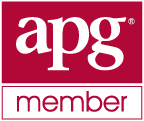Open Thread Thursday: Technology in the Next 5-10 Years
From GeneaBloggers comes this week’s “Open Thread Thursdays” blog-prompt topic:
With the RootsTech conference starting today and the genealogy industry’s continued focus on leveraging technology, what do you think will be available in 5 – 10 years to genealogists and family historians?
~ ~ ~
I’ll place my wager on the Build a BetterGEDCOM project, helping to modernize and clean up the myriad issues with sharing information across a sea of database formats, requirements, and assumptions.
GEDCOM (GEnealogical Data COMmunication) began in 1984 as a way to transfer data in a way that any program — or even we humans ourselves — could read and understand. The idea was to have a way to send a text file to someone so they can save time reentering it into their software, even if it’s a different brand than the sender used. By practice it grew to include backups of data and security in case current programs become obsolete. By 1996, GEDCOM had been updated to the current version 5.5. Even the latest “draft” proposal dates back to 1999 as 5.5.1 to add some Internet-based facts and an alternate international character set.
The problem, then and now, is seen when software programmers add their own proprietary fields when “exporting” to a GEDCOM file, or expect to see the same fields when “importing” another software’s GEDCOM files. This might “break” databases between versions of the even same software (though they usually have upgrade scripts) or “mangle” sources or other data when moving data from one to another. Even exporting a GEDCOM file as a backup and re-importing it to the same software can be problematic. I’ve had my share of all of these issues over the years.
Enter BetterGEDCOM, a project started in November 2010 in the Open Source and Wiki-edited fashion of community programming. Volunteers are detailing the issues faced when moving data back and forth, and software developers are participating to move things forward. Since that’s just in the first three months since the project opened, I’ll predict that a payoff will be sooner than the “5 – 10 years” we have for this exercise.
~ ~ ~
More a “wish” than prediction, though it won’t help with the type of line-colliding handwritten issue of the first example I posted any time soon, I do hope that OCR, or Optical Character Recognition, will continue to improve to help with transcribing scanned printed material. At least ease post-processing tasks toward the “comparative proofreading” end of spectrum and away from the “re-transcribing with real words” that takes longer than the eye-hand coordination method of faster typists. I’ve seen worse than this, but even clean printed scans of apt quotes using the proper language settings have some convenient mishaps:
Original:
Sjølv om det er arbeidt mykje med å gjere alt så rett som råd er, må ein ikkje undrast om der likevel kjem fram feil.
Langlo, Olav. Stranda Bygdebok III: Ættebok for Stranda. (Stranda [Norway]: Stranda Kommune, 1964), unpaged “Forord” [Forward].
OCR example:
Siplv 0m det er urbeidl mykje med 51 gjcra uh sii rett som réd e1·_ mii em ikkje undrast um der llkevcl kjcm {121111 feil.
The translation of that can serve as a nod to both of these future-tech wishes: “Although there is much work to make everything as right as possible, one must not wonder if something still comes out incorrectly.”
~ ~ ~
What do you predict, or just wish, for the next few years of technology for genealogists?



